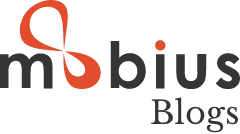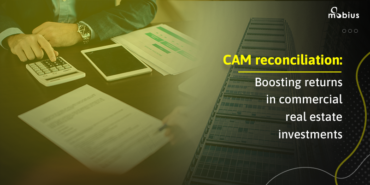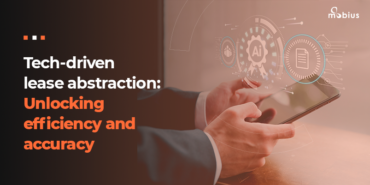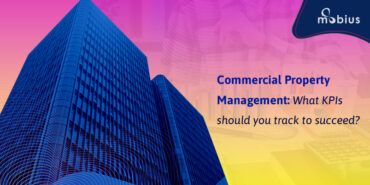Common area maintenance (CAM) accounting is a highly error-prone task that includes processing paperwork, collecting maintenance invoices, repair bills, and tenant’s leases to derive at the right CAM calculations.
Tenants usually request reconciliation statements from January to March, which is daunting for most landlords and property owners.
Real estate CAM reconciliation is a simple term, and the process may appear simple. But, commercial property landlords and property owners understand the real challenge – ensuring accuracy because a minor error in CAM computations can result in exponential loss during expense recoveries.
There is no unified approach for CAM reconciliation, as it varies depending on the leasing terms and conditions drafted by the landlords and property owners on the common area and the market value.
Even though the concept of CAM reconciliation revolves around maximizing the recovery of the property maintenance charges, the evaluation process is always tricky, arduous, and time-consuming.
To simplify and carefully handle the CAM reconciliation procedure, let’s dive deep into the best tips and practices for delivering an effective and profitable result.
Impact of an effective CAM reconciliation process
Landlords can utilize the amount recovered from CAM reconciliations for annual property and other common area maintenance expenses. An accurate CAM reconciliation provides more benefits than just financial recovery.
Transparency in tenant relationship
Timely and transparent CAM reconciliation strengthens the tenants’ trust in landlords. The correct reconciliation process can also persuade tenants to pay their rent on time and encourage their involvement in property maintenance. Accurate CAM reconciliation and keeping a tenant in the loop throughout the process can help you build a positive brand image and increase the chance of referrals.
Lease negotiations
Negotiations in lease agreements should benefit both landlords and tenants. A comprehensive CAM reconciliation process computes all reasonable management expenses to help landlords maximize their recoveries and provide the best amenities for tenants.
Competitive advantage
According to the 2022 NAR report, there are about 1,547,699 realtors in the United States. It is evident from the statistics how competitive the real estate market has become. To stay ahead of the competition, landlords and property managers must provide tenants with excellent amenities.
For best results, landlords should have complete control over CAM expenses. Through accurate CAM reconciliation, landlords can recover the amenities costs and strengthen their business performance.
Best tips and practices for CAM Reconciliation
Usually, the CAM accounting covers,
- Property repairs and maintenance cost
- Salary of maintenance staff and security services
- Property and other taxes
- New amenities expenses
Real estate firms depend on invoices and documents for CAM estimation and distribution of charges among tenants. Since most tasks involve reviewing and validation, outsourcing CAM accounting can simplify the laborious task and help determine accurate expense values.
Following certain steps during the reconciliation process is essential to estimate all these expenses correctly.
1. Review and document every modification
Reviewing the general ledger line by line and ensuring all invoices are linked to the proper account is challenging. Property owners and landlords managing multiple properties often struggle with invoice reviews and easily make errors in CAM charge estimations.
There is a high chance of missing important details during the estimation. Also, your in-house team has other primary property management responsibilities besides reviewing invoices. Outsourcing CAM reconciliation services allows your in-house team to spend valuable time on other revenue-boosting opportunities.
The CAM reconciliation review happens in three consecutive steps, which are mentioned below:
- Categorization of monthly expenses
- Cross verification and updating of missed invoices
- Comparison of the present CAM report with the previous year’s report
2. Include property management fees
Regarding property management fees, tenants are liable to pay their shares to their property managers. Most real estate firms partner with a property management company or in-house team to manage their properties.
Property management fees are not out-of-pocket expenses; Property managers may charge tenants between 4% and 12% of their monthly rent as property management fees.
Therefore, CAM reconciliation can include property management expenses. Having a clear understanding of management fees can prevent friction between property managers and tenants.
3. Ensure accurate CAM calculations
Owners of multi-tenant properties often use similar CAM calculations for all the tenants. Under such conditions, property owners may not consider the negotiations made with tenants.
Before sharing the CAM charges with tenants, it is necessary to make sure the CAM charges are accurate and validated against appropriate accounts, tenants’ lease documents, or property value.
Below are the things you should verify before sharing the CAM charges with tenants,
- Calculate the period of occupancy
- Double-check the pro-rata shares
- Calculate expenses based on occupancy space
4. Issue timely invoices
Monthly invoices should always be generated on time and must be a priority. Delay in invoice processing should not be the reason for holding back CAM payments. Generating CAM invoices on time results in timely collection of CAM payments that could directly go into property maintenance and repairs.
Outsourcing the CAM reconciliation services to a professional team can immensely save time and helps in streamlining the entire CAM workflow process for multiple assets simultaneously without much effort.
5. Conduct lease audits
Conducting lease audits can benefit both landlords and tenants. Lease audits ensure all the CAM charges are applied based on a pro-rata share of the rented space.
Auditors examine invoices related to the property and verify whether either party fulfills their lease obligations by comparing them to the lease terms.
For an accurate lease audit, it is necessary to calculate CAM distribution share, Actual expenses, and code invoices with property documents.
Outsourcing a lease audit to a professional service provider ensures that the landlords and property owners get a thorough audit without facing legal issues.
Why should you opt for Mobius CAM reconciliation services?
CAM reconciliation is a yearly process that computes monthly property maintenance and repair expenses. For multi-tenant landlords, CAM reconciliation is an uphill task; sometimes, they may fall behind in updating their ledgers, leading to more significant losses during recovery.
Also, reviewing and validating expenses based on tenants’ lease agreements and rented space in commercial buildings consumes more time and requires additional support.
To simplify your CAM reconciliation process, Mobius can help you create accurate monthly invoices, conduct lease audits, and calculate CAM costs with utmost accuracy and transparency.
Outsourcing CAM reconciliation and desktop audit services can save much of your precious time and money and maximize recoveries. Contact us today!






